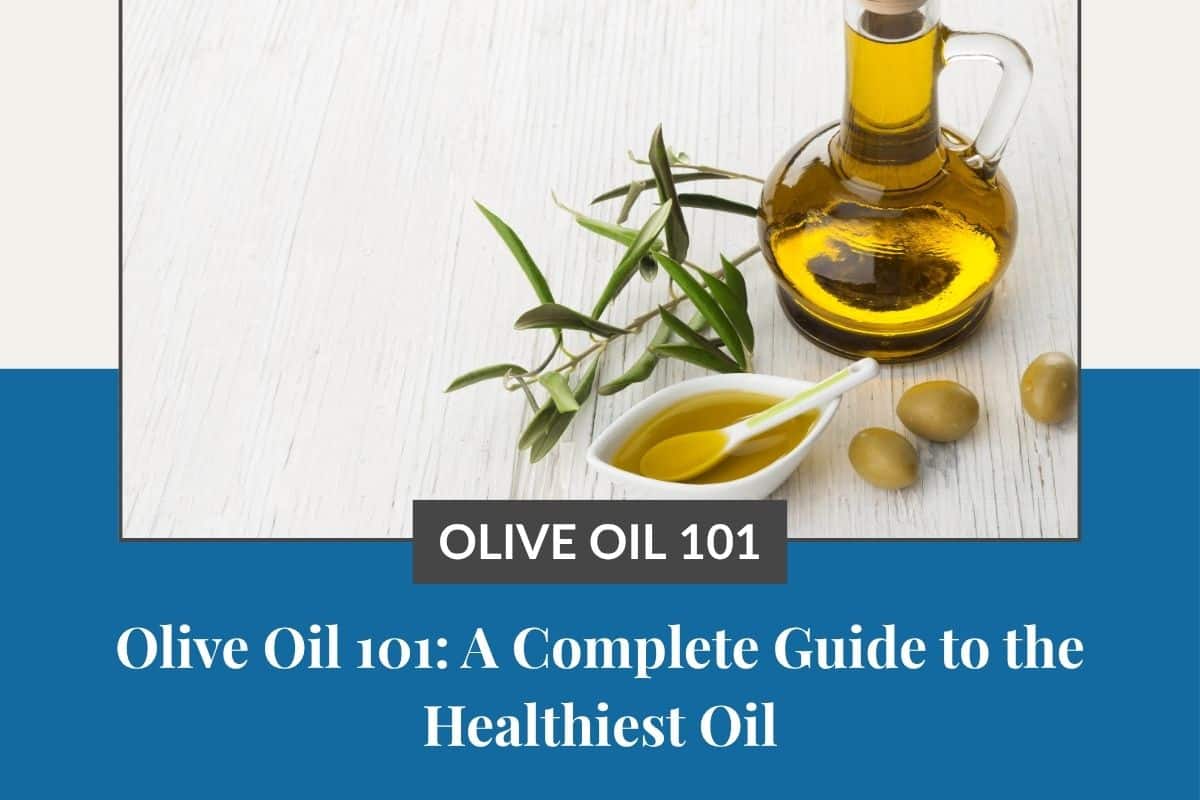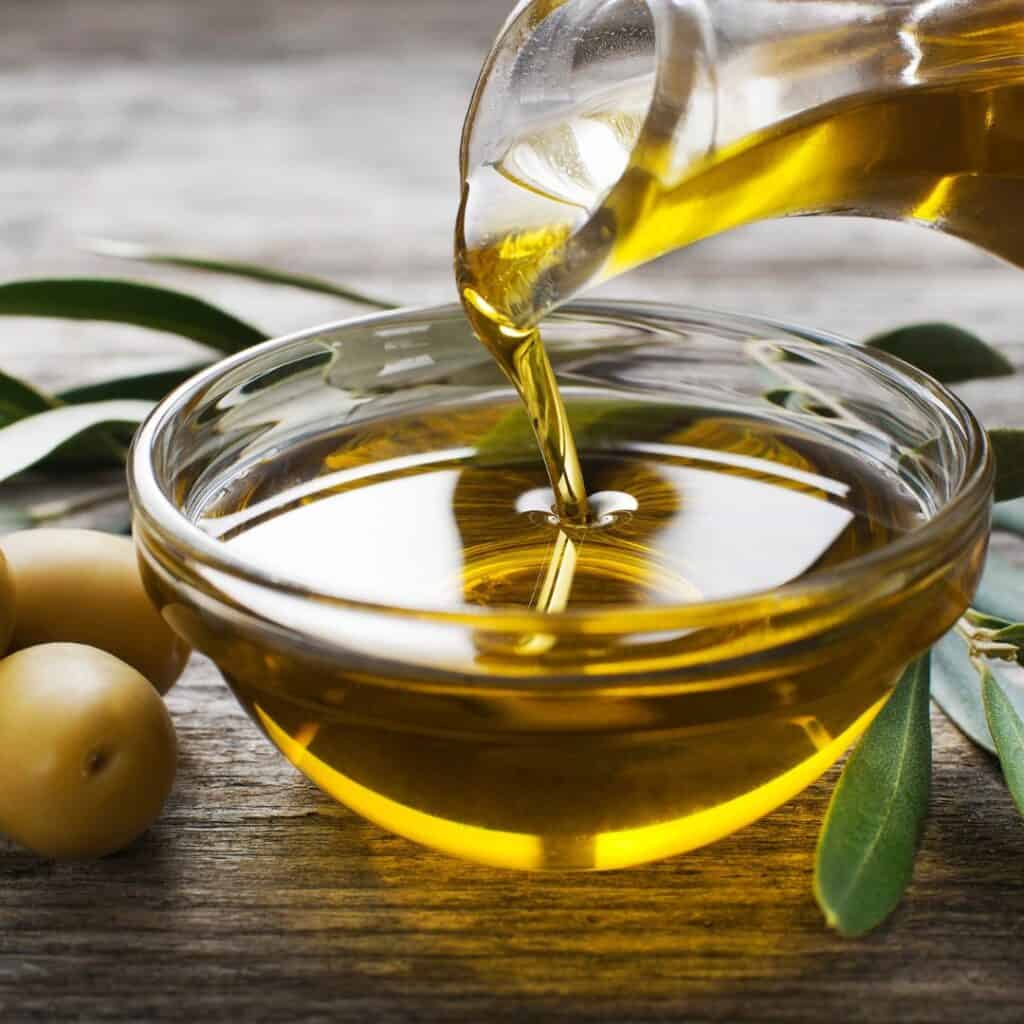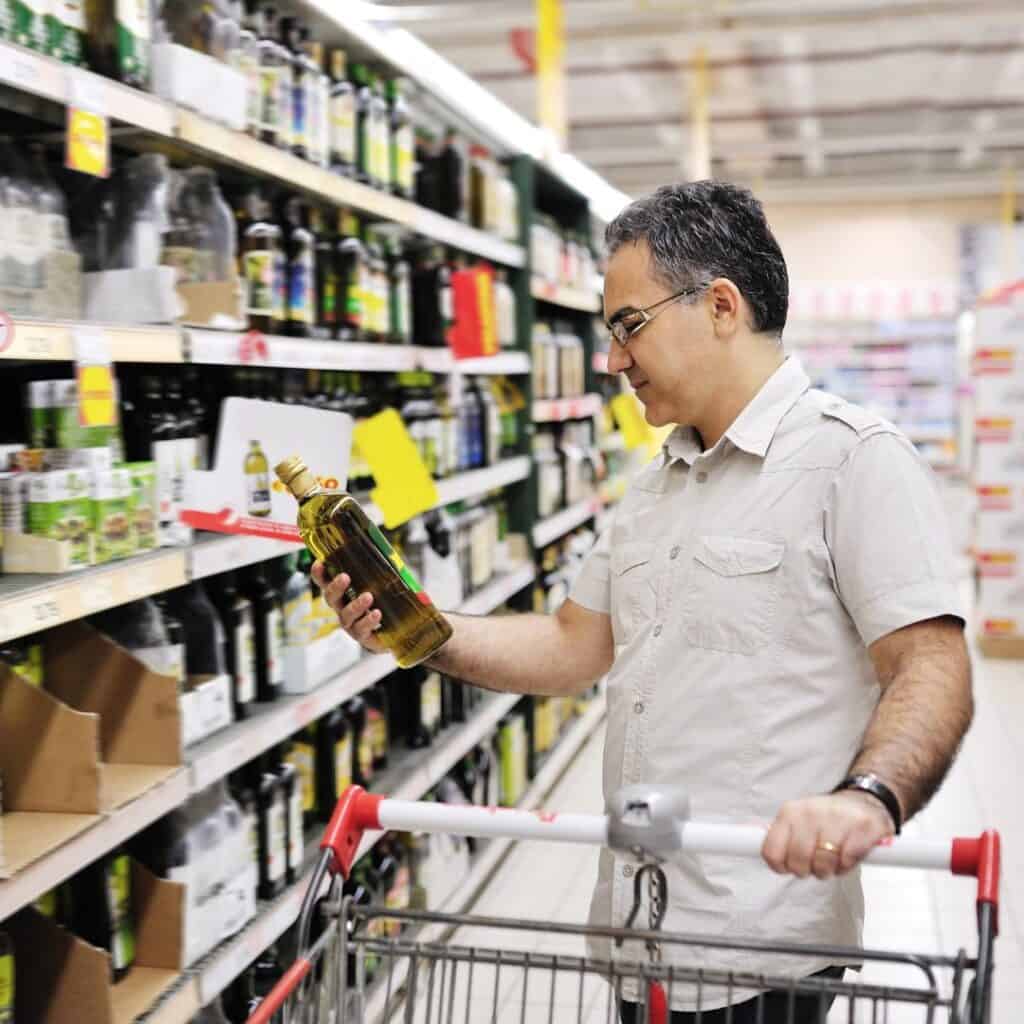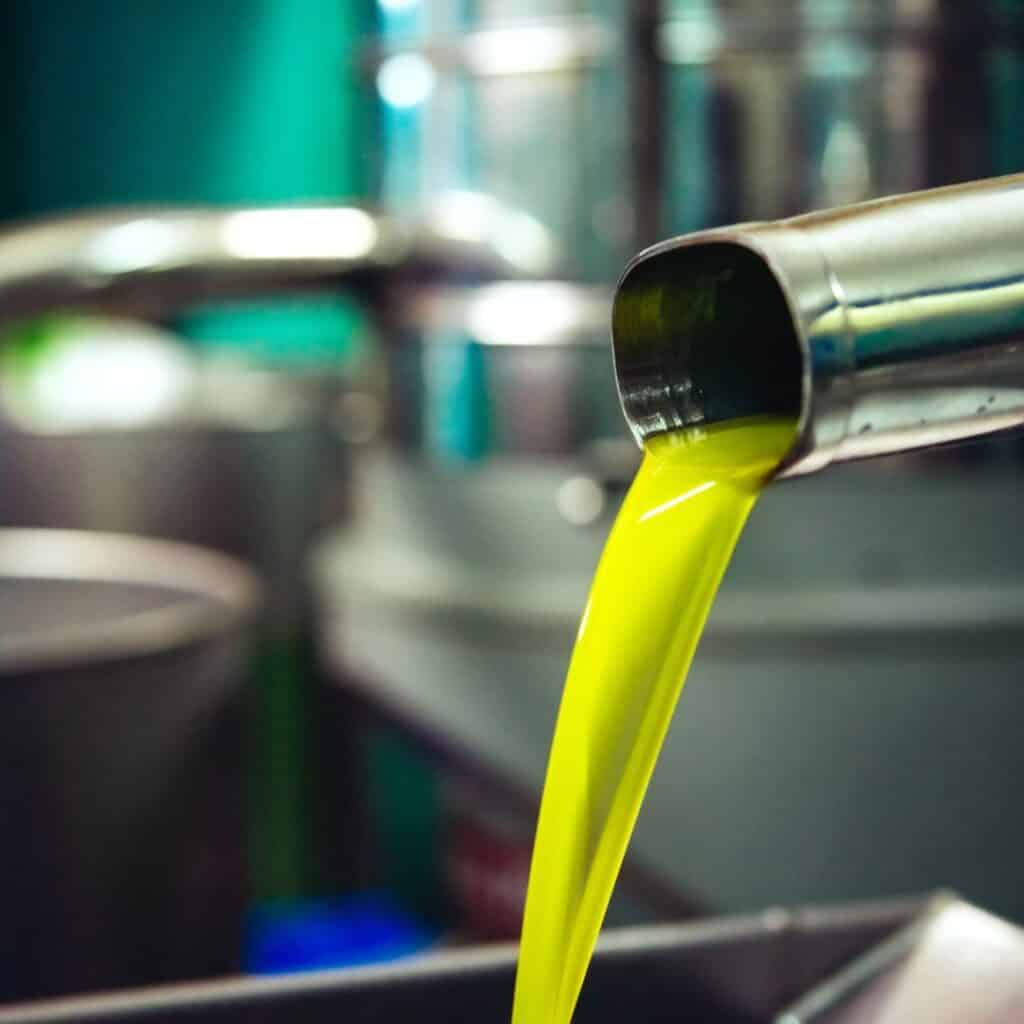
Olive oil is one of the world’s oldest and most beloved ingredients. But walk down the aisle of any grocery store, and you’ll quickly see how confusing it can be to choose a quality bottle.
Before I moved to Turkey, I honestly didn’t pay much attention to olive oil. I knew it was healthier and part of the Mediterranean Diet, but beyond that, I usually just grabbed the cheapest bottle at Walmart.
When I came to Turkey—the land of olive oil—I realized not all oils were created equal. Even there in Turkey, it was overwhelming at first. But what shocked me most was that even the lower-quality local olive oils tasted better than what I had been buying in the U.S.
So, if you’ve ever wondered:
- What do all those labels actually mean?
- What makes one olive oil better than another?
- What’s the difference between “extra virgin” and just “olive oil”?
- How do you avoid overpaying for something mediocre?
…you’re in the right place. In this olive oil 101 guide we will walk through everything you need to know about olive oil—from grades and labels to storage, taste, and health benefits—so you can shop smarter and enjoy your oil with confidence.
What Is Olive Oil, Really?
At its core, olive oil is a natural fruit juice—olive juice if you will—made by crushing olives and extracting their oil. No additives. No chemicals. Just pure fruit pressed into liquid gold.
But not all olive oil is equal. Factors like olive variety, ripeness at harvest, extraction method, and storage affect both flavor and health benefits.
Extra virgin olive oil (EVOO)—made without heat or chemicals—is the highest grade and the one you want to prioritize.
One more thing many people don’t realize: olive oil doesn’t age like wine. Freshness is key. A great olive oil is vibrant, aromatic, and alive. Over time, it declines in both taste and nutrition.

Understanding the Different Grades
Extra Virgin Olive Oil (EVOO)
The gold standard. EVOO is mechanically (cold) pressed, free from defects, and must meet strict chemical and sensory standards. It’s rich in antioxidants—especially polyphenols—making it delicious and healthy.
- Free fatty acid (FFA) level: must be below 0.8% (in California, <0.5%).
- Lower FFA = higher quality. Oils below 0.2% are considered very stable, making them suitable even for higher-heat cooking.
Recent studies suggest oil stability (resistance to oxidation) matters even more than smoke point—making quality EVOO one of the safest oils to cook with. According to the above article, EVOO is actually the most stable oil to cook with!
Virgin Olive Oil
A step below EVOO. It’s still cold-pressed but can have mild flavor defects and lower antioxidant levels.
- FFA limit: up to 2%.
- Rare in U.S. stores.
- Acceptable for cooking, but less flavorful and less beneficial than EVOO.
Refined, “Pure,” or “Light” Olive Oil
This is where marketing tricks appear. These oils are refined with heat and chemicals to remove imperfections. They lack flavor and beneficial compounds, sometimes blended with a splash of EVOO to improve taste.
- Neutral flavor.
- Fewer health benefits.
- If you care about flavor and nutrition, skip these.
Why Free Fatty Acids (FFA) Matter
FFA forms when oil breaks down. The higher the FFA, the more degraded the oil.
But how you store and use your olive oil also impacts FFA. Even a great oil will lose quality if exposed to air, heat, or light.
- Avoid keeping large tins or bottles open for long periods. Instead, decant oil into smaller, airtight bottles.
- Use within 3 months of opening for maximum flavor and antioxidants.
- Stored well (dark, cool place, sealed), olive oil can last up to 1 year before turning rancid.

How to Read an Olive Oil Label (Without Getting Fooled)
Marketing on olive oil bottles can be tricky. Here’s what to check:
- Harvest date: The fresher, the better. Northern Hemisphere harvest = Oct–Jan. Southern Hemisphere harvest = Mar–May. Always check how long it’s been since harvest.
- Single origin: Oils from one country/region/estate are usually higher quality than blends of unknown sources. Always check the back label for multiple countries listed.
- Dark glass bottle: Protects from light damage. Skip clear bottles, no matter how pretty they look.
- Certifications: PDO and PGI indicate geographic authenticity; organic labels show no chemical farming.
- Polyphenol count: Not always listed, but increasingly common. High-polyphenol oils offer greater health benefits.
And beware of vague terms like “light,” “pure,” or “made from imported and domestic oils.” These usually indicate lower-quality blends.
Polyphenols: Why They Matter
Polyphenols are antioxidants with major health benefits: anti-inflammatory, heart-protective, and even anti-cancer.
What Affects Polyphenol Levels?
- Olive variety: Some are naturally higher. In Turkey, high-polyphenol cultivars include Edremit, Mersin, Saurani, Sarı Hasebi, Gemlik, and Memecik.
- Harvest time: Early-harvest olives = higher polyphenols but lower oil yield (hence higher price).
- Processing: Cold-pressed oils retain more polyphenols than refined ones.
Average Polyphenol Ranges:
- Standard EVOO: 100–250 mg/kg (though mass market oils typically have between 50-150)
- High-polyphenol EVOO: 250+ mg/kg
- “Medical grade” EVOO: 500+ mg/kg (intense flavor, less palatable for some)
- Refined/commercial oil: 50–100 mg/kg
How Olive Oil Is Made (and Why It Matters)
To understand what makes an olive oil high-quality, it also helps to know how it’s made. The basic process has remained the same for thousands of years:
- Harvest: Olives are picked (ideally early in the season, when they’re still green and antioxidant-rich).
- Crushing: The olives—pits and all—are crushed into a paste using either traditional millstones or modern stainless steel machines.
- Malaxation: The paste is gently stirred to encourage the oil to separate.
- Separation: Using either a press or centrifuge, the oil is separated from the water and solids—no heat or chemicals involved if it’s truly “cold-pressed.”
- Bottling: The oil is filtered or left unfiltered (depending on preference), then bottled quickly to preserve freshness.
Why does this matter? Because the method of extraction impacts everything—flavor, nutritional value, shelf life, and purity. High-quality EVOO is made through mechanical (not chemical) means, with minimal heat exposure to preserve its delicate compounds.
What Does Good Olive Oil Taste Like?
High-quality olive oil should taste fresh, vibrant, and complex. Flavor notes may include:
- Grassy or herbal
- Fruity or floral
- Bitter (a good sign of polyphenols)
- Peppery/pungent (a good sign of polyphenols)
That throat tickle you get with a high-quality olive oil is a sign of antioxidants at work!
For example, our early-harvest Aydın oil (polyphenols: 293 mg/kg) has a buttery balance with green almond notes, plus just enough pepperiness to signal freshness without overpowering.
Storage Tips: Keep Your Olive Oil Fresh
- Store in a cool, dark place (not by the stove).
- Keep bottles sealed tightly.
- Use within 2–3 months of opening, though it can be used for up to 18 months after harvest.
- If buying large tins, pour into smaller bottles for daily use.
- Avoid clear glass unless you use it quickly.
If it smells musty, rancid, or like crayons—it’s gone bad. Toss it.

Common Olive Oil Myths Debunked
“You can’t cook with EVOO.”
False. Quality extra virgin olive oil (EVOO) is both stable and safe for sautéing, roasting, and even light frying
This study by Modern Olives Laboratory Services (Australia) found that extra virgin olive oil was the most stable and least toxic oil to cook with—even when used for frying.
They also debunked the common myth that smoke point is the best indicator of an oil’s stability when heated.
“All Mediterranean olive oils are the same.”
Not true. Climate, soil, olive variety, harvest timing, and processing methods all make each oil distinct.
Turkish oils often have a rounder, more buttery profile compared to sharper Italian oils, but they’re far from identical.
Türkiye alone has more than 25 native olive varieties, though not all are used for oil production. Many are prized for table olives—which, I’d venture to say, are among the best in the world.
“Light olive oil has fewer calories.”
Wrong. “Light” refers to the flavor, not the calories.
These oils are refined and therefore less nutritious. They’ve been treated with heat and chemicals to remove flavor and raise the smoke point—but as noted earlier, that’s not what makes an oil safer or better for cooking.
Why Source Matters
Even authentic EVOO can lose quality through poor storage, blending, or transport. By the time it hits your grocery shelf, it may no longer be extra virgin, having lost both the polyphenols and the aromatic flavor.
That’s why sourcing directly from trusted producers or brands that work closely with growers (like Elysian does in Turkey) makes all the difference.
Now what?
Olive oil tells a story. A story of soil, sun, and the people who have tended the trees for generations. When you choose a high-quality extra virgin olive oil, you’re not just buying flavor; you’re honoring centuries of tradition and craftsmanship.
At Elysian, we’re proud to share the richness of Türkiye’s groves with those who value authenticity and integrity. Because when you know what’s in your bottle, you can taste the difference and trust that every drop was made with care, from tree to table.
What happens if you take a spoonful of olive oil every day?
According to many studies out there, a high-quality olive oil that is full of polyphenols has many health benefits, including things like lower “bad” LDL cholesterol, lower inflammation, and even anti-cancer.
What are the three enemies of olive oil?
Light, heat, and oxygen. When olive oil comes in contact with these three, it starts to break down, and the FFA (free fatty acid) count rises. You can make it last longer by keeping a lid on your oil (instead of a pour spout) and storing it in a cool, dark place.
What do cardiologists say about olive oil?
Apparently, the Journal of the American College of Cardiology published an article in 2022 where they explained their findings that when individuals consumed higher levels of olive oil—as opposed to butter, dairy fat, etc— their overall and cause-specific risks of death were lower.
